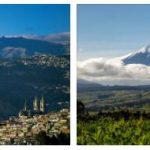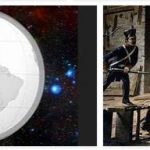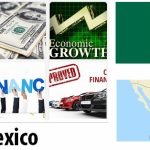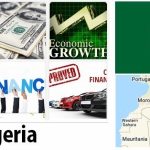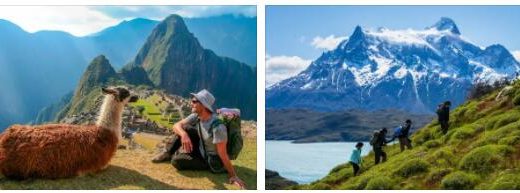Ecuador Economy Facts
Economical overview
Ecuador is one of South America’s poorest countries. For long periods, high unemployment, high inflation and a weak modern sector have slowed economic development and created political unrest. In recent years, attempts have been made to broaden the economy in order to reduce the traditional dependence on a few raw materials, primarily oil and bananas. The dependency makes Ecuador vulnerable to price changes on the world market.
Following the appointment of economist Rafael Correa as president in 2007, with a program to better distribute society’s resources, the political situation stabilized. According to Correa himself, one million Ecuadorians are being lifted out of poverty. The economy almost doubled during Correa’s decade in power. But falling world market prices for oil towards the end of his presidential term focused on the vulnerability of the economy.
- Countryaah.com: Major imports by Ecuador, covering a full list of top products imported by the country and trade value for each product category.
Lenín Moreno, who succeeded Correa in 2017, has changed course and presented in April 2018 a program to deal with the budget deficit that the year before was close to 6 percent of GDP. It included cuts in the extensive state apparatus and initiatives to stimulate private enterprise. A decision was made to privatize a number of companies and open up others for private participation. In March 2019, the government signed an agreement with the International Monetary Fund (IMF) on austerity measures intended to strengthen the economy, ease the debt burden and generate jobs. In return, Ecuador was given the go-ahead to borrow $ 4.2 billion.
- Abbreviationfinder.org: Check this abbreviation website to find three letter ISO codes for all countries in the world, including ECU which represents the country of Ecuador. Check findjobdescriptions to learn more about Ecuador.
As part of the cuts, the government in October 2019 removed fuel subsidies that have existed since the 1970s, which has more than doubled the gasoline price. It triggered protests that became so violent that the president was forced to reintroduce the subsidies (see Current Policy).
The Corona pandemic in the spring of 2020 hit hard on the already strained economy. In terms of infection and death, Ecuador was a few months into the crisis, the hardest hit country in South America, per capita. At the end of May, President Lenín Moreno decided to close a number of state-owned companies and embassies around the world, as part of a package of measures to try to save around $ 4 billion. At the same time, the government stated that the economy has already gone back $ 8 billion due to the pandemic. The airline Tame, which has lost more than $ 400 million in losses over the last five years, was liquidated. Public employees were laid off and worked only 75 percent, with 84 percent of the previous salary.
Jerky economic policy
During good years with high prices for oil and bananas, demands have grown in the country on major social improvements. When prices have fallen, governments have also previously been forced into austerity, which has led to political instability. Frequent shifts in power and a jerky economic policy have helped to scare away investors and have led to capital flight.
A number of austerity programs and attempts to restructure the economy have failed. Attempts to get the economy organized through cuts in the public sector and through increases in gas, electricity and gasoline prices have had no long-term effect.
At the end of the 1990s, foreign debt soared, while the currency, sucre, had to be devalued several times. Inflation galloped, the economy shrank and unemployment rose sharply. In 1998/1999 Ecuador was dangerously close to a state bankruptcy as a result of the combined effect of a sharp fall in oil prices, an acute banking crisis and adverse effects of the El Niño weather phenomenon (see Geography and Climate).
In January 2000, the sucrose was replaced by the US dollar. This led to a sharp reduction in inflation and stabilization of the price level, but at the same time made the Ecuadorian economy dependent on the dollar exchange rate. As the dollar increased in value in the following years, Ecuadorian exports became more expensive at the same time as imports got a push, which hit the domestic industry.
Thereafter, the economy again showed growth, mainly due to high oil prices. Some improvement in living conditions also occurred, partly because of increased wages in the public sector, and partly because of the money Ecuadorians working abroad send home. On the other hand, investment has remained low, and the modernization of the domestic industry is slow. Something that inhibits investment is the lack of a functioning domestic stock exchange.
“Economic Revolution” 2007
Left-wing President Rafael Correa promised in his 2007 entry an “economic revolution” with increased state involvement in key industries such as mining, the oil industry, banking and telecom. His goal was that a larger portion of the revenue would go to the state and the Ecuadorians than before.
Correa made several changes in economic policy. Among other things, he renegotiated the contracts with the oil companies so that a greater part of the profits from the oil accrues to the state. He also negotiated a free trade agreement with the US on ice – he said such agreements only benefit the large, international companies. With its main trading partner USA, Ecuador had instead succeeded in drawing up a tariff-free agreement for a number of goods on the US market. Faced with the prospect that the US would terminate the agreement unless Ecuador promised to refrain from granting US whistleblower Edward Snowden asylum, however, Ecuador itself decided to terminate the agreement in June 2013. Domestic companies that traded with the United States have received some state compensation.
With the EU, which mainly imports Ecuadorian agricultural products, Ecuador from 2017 has a free trade agreement. The country then signed an agreement that Colombia and Peru signed a few years earlier. Before that, Ecuador had some trade benefits.
Large foreign loans
Correa also sought to reduce its dependence on foreign aid. Ecuador has also previously had large loans from, for example, the IMF, the World Bank and the Inter-American Development Bank (IDB). Correa was dismissed as Finance Minister in 2005 for publicly condemning the World Bank as saying no to a new big loan. According to Correa, the refusal was a retaliation for his oil industry reform program, while the World Bank stated that the reason was that Ecuador had breached the loan terms. In April 2007, the World Bank representative in Ecuador was expelled. In line with its election promise to prioritize social investments before loan repayments, at the end of 2008, Correa decided not to pay off part of its external debt. He justified the decision that the loans were taken on an illegal basis by people in the previous right-wing government.Foreign policy and defense).
The global economic downturn in 2008 also affected Ecuador. The dollar weakened, leading to rising inflation. The financial contributions from Ecuadorians abroad to relatives in the home country decreased, while export earnings fell.
Tourism is now an important source of income. Ecuador is one of the most popular tourist destinations in South America with mountains, beaches, tropical rainforest and a rich plant and wildlife. The tourists mainly visit the Galápagos Islands, the mountain region and the Amazon. Ecotourism is expanding most and many indigenous peoples carry out their own tourism projects.
FACTS – FINANCE
GDP per person
US $ 6,345 (2018)
Total GDP
US $ 108,398 million (2018)
GDP growth
1.4 percent (2018)
Agriculture’s share of GDP
9.2 percent (2018)
Manufacturing industry’s share of GDP
14.2 percent (2018)
The service sector’s share of GDP
51.6 percent (2018)
Inflation
0.4 percent (2019)
Government debt’s share of GDP
45.8 percent (2018)
External debt
US $ 39,536 million (2017)
Currency
US dollar
Merchandise exports
US $ 22,117 million (2018)
Imports
US $ 22 380 million (2018)
Current account
– US $ 1,487 million (2018)
Commodity trade’s share of GDP
41 percent (2018)
Main export goods
oil and oil products, seafood and fish, bananas
Largest trading partner
USA, China, Colombia, Vietnam, Chile

